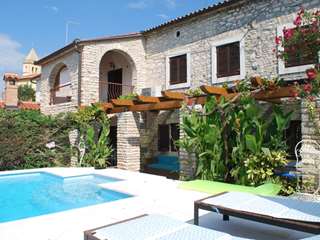 Villa Mimi
Liznjan, Istria Region
Traditional family villa with pool. Cafe and shop a short walk
3 Bedrooms / Sleeps: 6 + 2
from 1200 € / week
Villa Mimi
Liznjan, Istria Region
Traditional family villa with pool. Cafe and shop a short walk
3 Bedrooms / Sleeps: 6 + 2
from 1200 € / week
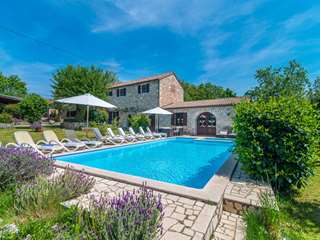 Fig Tree Farmhouse
near Svetvincenat, Istria Region
Family-friendly, fabulous BBQ and summer kitchen, play area, games room and outdoor activities
5 Bedrooms / Sleeps: 10
Price on request
Fig Tree Farmhouse
near Svetvincenat, Istria Region
Family-friendly, fabulous BBQ and summer kitchen, play area, games room and outdoor activities
5 Bedrooms / Sleeps: 10
Price on request
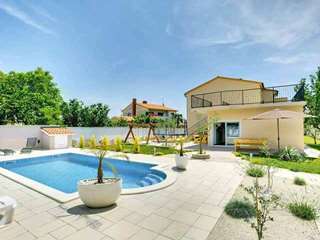 Villa Alycia
Medulin, Istria Region
Plenty of amusements, fun and games in this fun house located in a sandy beach resort town with all amenities
5 Bedrooms / Sleeps: 10 + 2
from 2023 € / week
Villa Alycia
Medulin, Istria Region
Plenty of amusements, fun and games in this fun house located in a sandy beach resort town with all amenities
5 Bedrooms / Sleeps: 10 + 2
from 2023 € / week
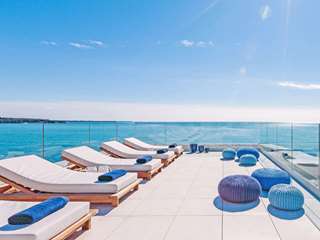 Castle Beach
Novigrad, Istria Region
Amazing lux villa on the beach, close to top restaurant, indoor outdoor pool, breathtaking sea view
4 Bedrooms / Sleeps: 8 + 4
Price on request
Castle Beach
Novigrad, Istria Region
Amazing lux villa on the beach, close to top restaurant, indoor outdoor pool, breathtaking sea view
4 Bedrooms / Sleeps: 8 + 4
Price on request
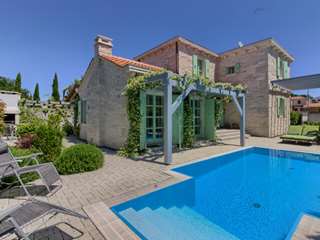 Villa Zelda
Liznjan, Istria Region
A lovely stone villa with pool and walled garden, close to amenities, beaches, and a pretty village
3 Bedrooms / Sleeps: 6 + 2
from 1750 € / week
Villa Zelda
Liznjan, Istria Region
A lovely stone villa with pool and walled garden, close to amenities, beaches, and a pretty village
3 Bedrooms / Sleeps: 6 + 2
from 1750 € / week
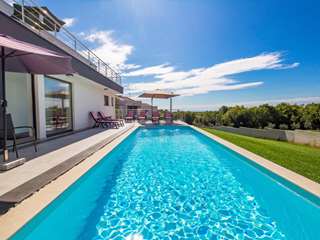 Villa Ellenor
near Pula, Istria Region
Modern luxury idyllic villa with sea views, close to local harbour and famous scuba diving school
4 Bedrooms / Sleeps: 8
from 1680 € / week
Villa Ellenor
near Pula, Istria Region
Modern luxury idyllic villa with sea views, close to local harbour and famous scuba diving school
4 Bedrooms / Sleeps: 8
from 1680 € / week
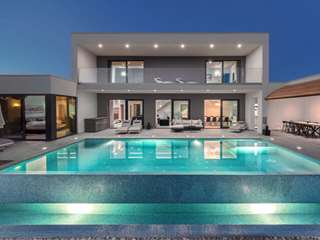 Villa Maxy
near Svetvincenat, Istria Region
Modern luxury villa fantastic for families, children and teenagers, great food and beaches
4 Bedrooms / Sleeps: 8
from 3495 € / week
Villa Maxy
near Svetvincenat, Istria Region
Modern luxury villa fantastic for families, children and teenagers, great food and beaches
4 Bedrooms / Sleeps: 8
from 3495 € / week
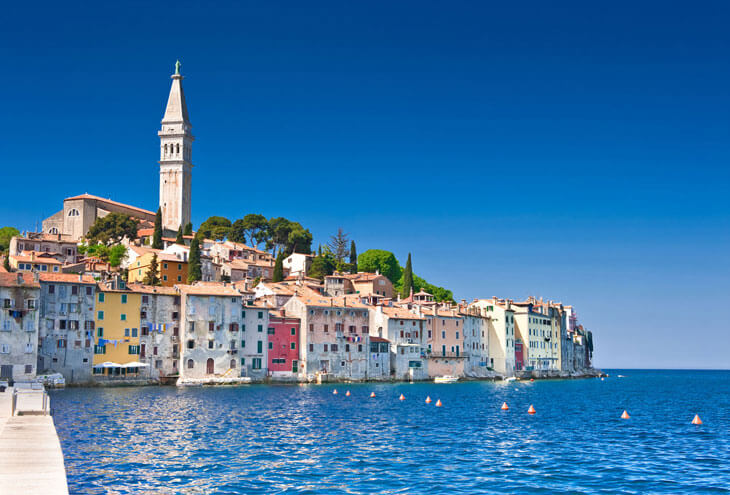
The Istrian coastline is characterised by the string of beautiful small Mediterranean towns along its western coast. These include Umag, Porec, Novigrad, Vrsar and the outstandingly picturesque Rovinj with its spectacular narrow streets leading up to the church of St Euphemia in the heart of the old town. These Istrian towns were all important outposts of the Venetian Empire and still display the atmosphere and architecture of that era with their charming squares, narrow pedestrian streets and alleyways, and delightful cafes and restaurants set around busy harbours packed with local fishing boats. The port of Pula at the southern end of the peninsula, an important city from Roman times, is famous for its original 2nd century Roman amphitheatre and other Roman monuments as well as it large sheltered harbour and many beaches and resort areas with fine cuisine.
The eastern coast of Istria is less developed with the most notable resort at Rabac. The deep estuary of the Rasa River is totally unspoilt. The north east of the peninsula is characterised by a mountain range with the highest peak, Mount Ucka visible from Pula in the south on a clear day. Crossing these mountains (there is a road tunnel under Mount Ucka), one enters the area of the Kvarner Riviera with its sumptuous resorts of Opatija and Lovran.
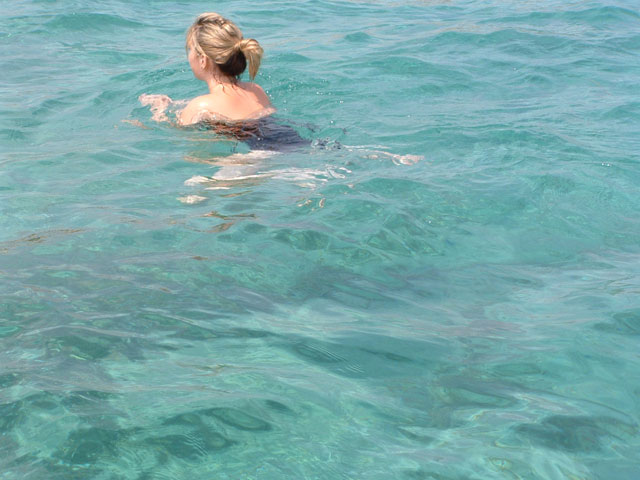
Central Istria is a tourist destination in its own right. Often described as the “new Tuscany”, the area has a rolling green landscape of vineyards, olive groves and forests and is studded with preserved and charming medieval hilltop towns, offering breath taking views across the surrounding countryside, often extending to the Adriatic coast.
There are any number of places to visit but the most notable are the fortified town of Motovun with its acclaimed international summer film festival, the tiny but delightful Groznjan a designated cultural centre alive with music and art galleries and Oprtalj, with a faded medieval grandeur and wonderful peacefulness.
The popular west coast of Istria is well served with accessible beaches all down the coast. Close to the town centres the beaches will often be concrete or man-made but provide facilities such as sun loungers and sun umbrella hire and will have cafes and restaurants close by. But there are natural beaches too, often with flat rocks or pebbles. Sandy beaches are rare but can be found. The water is exquisitely clean and clear wherever you go. The east coast of Istria is much less developed and here there are secret beaches often only reached by unsurfaced tracks, footpaths or by boat. These are places where you can find peace and tranquillity away enjoy nature from the crowds and enjoy some the best swimming that can be found.
There are numerous beaches to choose from and we have made a selection to demonstrate the range of beaches available from those that are ideal for families to those in more remote or unusual locations.
The Rasa Estuary is one of the least developed and most stunningly beautiful sections of Croatia's coastline. This wide estuary which can be navigated by ships winds inland for over 10 kilometres to the small fishing village of Trget. Every turn and bend in the estuary opens up another vista with more bays and coves to explore. The steep hills and cliffs that run down to the water's edge on the west side of the estuary provide a stunning backdrop. The best places for swimming are small coves or area of smooth, flat rocks below steep cliffs which can only be reached by boat or unsurfaced tracks. But there are beaches that are more accessible, often in small bays that provide shelter for local fishing boats. But don’t expect beach bars and cafes. These are beaches where you should bring your own picnic. On the west side of the estuary we would identify Luka beach below the village of Rakalj in a small bay with pebbles and some sand. The beautiful emerald green water is complimented by the backdrop of a wooded hillside. On the east side Tunarica beach near Diminici is a wide bay in which many boats find sheltered moorings.
This busy beach in the popular tourist village of Medulin is one of the few truely sandy beaches in Istria. The beach shelves very gently and you can walk out a long way over sand before reaching deeper water so an ideal beach for young children. Beach bars and cafes are on the beach edge and a short walk takes you to the main promenade where there are dozens of restaurants and cocktail bars and boat trips to the nearby islands can be booked.
Medulin Bay is scattered with several islands easily reached by taxi boats from Medulin. Our favourite is Levan island which has a sandy beach and three beach bars which serve hot meals and cold drinks. Drive down from the village of Liznjan to the coastline opposite Levan and one of the small boats operated by the beach bars will come and pick you up. Sun loungers and umbrellas can be hired. One of the beach bars can be booked as a wedding venue so worth a visit if you are scouting for a wedding location.
Rt Kamenjak is the rocky headland at the southern tip of the Istrian peninsula. Drive through the village of Pemantura to enter this protected nature zone. There are numerous tracks and footpaths leading down to bays and beaches on either side of this rugged headland. On the east side we pick out the tiny sandy beach called Mal Portic on the north side of the deep Portic bay. The surrounding pine trees provide good shade so an ideal spot for a day by the sea. On the west side the pebbly Nijeve beach has wonderful emerald green water. You can drive down to the very tip of Rt Kamenjak and then climb down the steep cliffs to find ledges and areas of flat rock to stake out your space for the day. From here you can watch intrepid divers jump of the high cliffs into the deep water at their base, snorkel in the gorgeous clear water, swim into the blue cave where sunlight shines through a hole in the roof, or simply stroll along the clifftops and take in the scent of the wild herbs that are gently crushed under foot as you walk.
There are beaches all around the Verudela headland which is a resort area on the edge of Pula. Park in the central car park area and walk down to the beaches on surfaced pathways.
Beach Svjetionik (which translates as Lighthouse beach) is a beach with flat rocks and ledges which are great to sit on with your feet in the water. From here you can watch the yachts sailing in and out of Veruda Marina and you can take refreshment at the stylish cafe and restaurant with a spectacular location on the cliff edge overhanging the beach. The water here is crystal clear and great for swimming. Or walk along the coast path to other beaches and swimming places.
This beach with a mix of rocks, sand and pebble is suitable for families and children. It is within the Zlatni Rt Park Forest a protected area of woodland and coastline. It is a great area for walking and biking and the cliffs attract climbers. The beach has a beach bar and can be busy but you can walk along the coast to other bays and beaches within the Park Forest and find more secluded areas. Although this is very much an area of natural landscape you are only 15 minutes' walk from the centre of Rovinj probably the most picturesque coastal town in Istria. Combine a morning sightseeing in Rovinj with an afternoon relaxing on the beaches or in the shade of the trees in the Zalatni Rt Park Forest.
This delightful estuary extends inland north of Rovinj and is a protected nature area and largely undeveloped. Even boat mooring is restricted. Boat tours from Rovinj are a great way to visit the Fjord but you can also drive to the Viking restaurant near the head of the Fjord on the north side. There is a sandy beach below this excellent restaurant so a great place for lunch and a swim. The beach is gently shelving and suitable for children.
Oliva beach is located on the small island of St. Nikola near the town of Porec. The island is easily reached by a taxi boat service from Porec harbour. The beach is mainly pebble and has a paved area which forms a shallow pool on the water's edge which is perfect for children. There are restaurants and bars close by and shady area under the pine trees. Porec itself is a busy tourist resort with a historic centre famous for its 6th Century Euphrasian Basilica which has UNESCO World Heritage status.
Immediately outside the ancient walls of the charming historic town of Novigrad is a man-made beach offering large flat paved areas for sunbathing with paddling pools for children on the waterline that naturally fill with sea water. The attraction of this beach is that you have all the facilities of the town just a few metres away. Novigrad is a lovely town to visit. Narrow streets in the centre of the old town are lined with shops, cafes, bars and restaurants. A colourful harbour full of fishing boats and ancient fortifications on the water's edge complete the picture. Spend an hour or two exploring the town and then step through an opening in the town walls to cool off with a swim.
Istria is a great destination for lovers of good food and wine. There are first class award winning wines and well signposted wine routes to follow where you can visit famous wine growers and buy from them directly, whilst sampling some of the local food specialities.
Central Istria is also one of the few areas in Europe where truffles grow naturally in the dense forests around Livade. Inland Istria has numerous excellent restaurants excelling in meat and pasta dishes using world class local truffles in generous proportions. Truffle lovers will be overwhelmed by the sheer quantity of truffle served at very reasonable prices. On the coast the restaurants will tend to focus more on freshly caught seafood and the overall culinary style is heavily influenced by Italian cuisine.
There is so much to recommend Istria to you. For a start, over 300 days of sunshine a year. Did you know that it takes only 2 hours to Istria from the UK and most European destinations? The sea is clean, clear, warm and safe to swim in. There is a new world class golf course by the sea near Umag and others are planned. The food and wine are of extraordinary quality, and accommodation ranges from wonderful villas with pools and character cottages to boutique hotels and sea view apartments. It is the right choice of vacation for families with children, or adults only, for romantic weekends and honeymoon couples, food and wine lovers, music festival goers, bicycling enthusiasts and all watersports, with one of the top windsurfing spots on the Adriatic. After all that, you can spend a few hours or whole days on discovering the cultural and historic gems of Istria by yourselves or with our excellent multilingual local guides. You will have a wonderful holiday, to which we shall pay our personal attention to make your vacation experience most memorable.
Istria derives its name from the ancient Illyrian Histri tribe. The Illyrians settled on the Eastern shores of the Adriatic from around the 8th century BC. The Histri were subdued by the Romans and became part of the Roman Empire from 177 BC. The Romans prized the region for its olive oil which remains of a very high quality to this day. The principal buildings and monuments from this era are found in Pula. Most notable is the first century amphitheatre which is remarkably well preserved and is the sixth largest in the world. Today it is still a venue for concerts and a film festival. It is an unique sensation to sit listening to a concert on the same stone seats where Roman citizens sat over 2000 years ago. The Temple of Augustus built between 27BC and 14AD stands on the forum, a lively square packed with cafes in the heart of the City. The archaeological museum in Pula has Roman and pre Roman artefacts. The remnants of Roman country houses, villas rustica, can be found in several locations on the east coast of Istria and amphorae from the Roman era , used for storing olive oil and wine, can sometime be found on the sea bed where they should be left but reported to the authorities.
Istria remained under Roman control and influence until the collapse of the Western Empire in 476AD. This was followed by a period when the Ostrogoths were the controlling force before the region fell within the sway of the Roman Eastern Empire which introduced a Byzantine element to architecture from the period.
Christianity was introduced to the region in the third and fourth centuries AD and Istria has some fine examples of early Christian church architecture. The Euphrasian Basilica in Porec is an outstanding example. It was built in the sixth century but on the site of an earlier Christian basilica. The Chapel of St Mary Formosa in Pula is also a surviving part of a large Christian basilica from the Roman era.
It was during this period from the 7th century AD that Slavic tribes from northern Europe began to establish themselves in the region.
From the 8th century the Emperor Charlemagne's military campaigns and a weakened Eastern Empire brought Istria within the boundaries of the Holy Roman Empire and a Germanic influence.
From the 12th to the 14th century Venice was the dominant influence in Istria with the towns on the west coast all falling under Venetian control. Venetian power did not extend fully inland and parts of central and Eastern Istria remained under Austro-Hungarian Hapsburg influence.
Pazin in central Istria, with a powerful castle overhanging a spectacular gorge, was the stronghold of the Hapsburgs in this region.
The Venetian influence is clearly seen in the architecture of the coastal towns and sets the character for the region. Church architecture closely followed Venetian design. The impressive bell tower of St Euphemia in Rovinj was, for example, modelled on the tower of St Mark' Basilica in Venice.
Venetian control over the Istria coastline began to slip during the last decade of the 18th century. The Austrians took control of the whole region in 1799 but conceded Istria to the ambitions of Napoleon in 1805 only to recover sovereignty over the region again in 1813. Austria identified Pula as the location for its principal Mediterranean naval port and invested heavily in the town to develop the port and docks.
The Treaty of London signed in secret in 1915 was designed to secure Italy's support for the Allies. Under the terms of the treaty in return for declaring war on Germany and Austria -Hungary, if the Allies were victorious Italy would be granted territories that had formed part of the Austrian Empire. The designated territories included Istria. The Treaty of Versailles in 1918 nullified this secret agreement but Italy annexed Istria and pursued its claim for the territory. The claim was ratified by the Treaty of Rapallo 1920.
Under its fascist dictator Benito Mussolini, Italy embarked on an aggressive period of Italianization requiring Italian to be used as the official language of government administration and of the law courts. Teaching the Slovene and Croatian languages was forbidden and Italian teachers were brought in to replace the local teachers and to conduct teaching in Italian. In 1926 laws were introduced to force Croats and Slovenes to adopt Italianized versions of their names. Priests who were known to be opposed to the policy of Italianization were moved to remote parishes.
During this period over 100,000 Croat and Slovene Istrians emigrated to the Kingdom of Serbs, Croats and Slovenes which had been created in 1918. The name was later changed to the Kingdom of Yugoslavia (meaning Kingdom of South Slavs) in 1929.
Italian is still widely spoken in Istria today. There are many villages where Italian is the principle language. You will see place displayed in both their Italian and Croatian form. Italian is very much the second language of Istria. Italy still has considerable influence in the region. In some communities Italian schools have been maintained. The older generation who worked during the period of Italian occupation received pensions from the Italian state. Many Istrians work in Italy returning home either daily or at the weekends.
Istria was occupied by the Italian fascist forces during the second world was while neighbouring Yugoslavia was under German occupation. A bitter civil war was being fought within Yugoslavia alongside a guerrilla war against the German occupation. The Allies recognized that the communist leader Josip Broz Tito was providing the most effective opposition to Hitler and gave him support to resist the Axis powers. As the Second World War drew to its end game Tito saw the opportunity to win back Istria into the state of Yugoslavia. His partisans raced to occupy as much Istrian territory as they could so that they had a strong hand to play as the boundaries of Europe were redrawn in the aftermath of the war. Tito successfully recovered Istria for Yugoslavia conceding only the city of Trieste which remained in Italian hands. Italian fascist sympathisers fled back to Italy abandoning their properties in Istria. Many of the abandoned ruins that you see in Istrian villages today will have belonged to Italians who fled from the region in 1946.
As the war ended Tito emerged as the winner of the power struggle within Yugoslavia and set up a communist state of which Istria was a part. Tito was not prepared to be an Eastern bloc puppet of Stalin and in 1948 famously split with Russia to pursue a role as a founding leader of the non-aligned movement. This enabled Tito to obtain aid and support from the west which saw him as the first line of defence against Russian ambitions in the Balkans.
Tito's communist beliefs did not prevent him from acquiring a portfolio of stunning presidential homes. One of these was the Brioni islands which lie just off the west coast of Istria near Fazana. Here Tito entertained world leaders and film stars as he developed his vision for a non-aligned movement in global politics and promoted his own brand of liberal socialism.
During the 1960s Istria emerged as the driving force of the growing tourist industry in Yugoslavia. Town such as Pula, Rovinj and Porec became popular package tour destinations.
Tito, by force of personality and some robust treatment of his political opponents, had held the Republic of Yugoslavia together despite underlying ethnic, religious and economic tensions. His death in 1980 opened the drawbridge for these differences to be more widely expressed and within 12 years Yugoslavia had dissolved into civil war as Slovenia and Croatia broke away from the rest of the Republic and established their own independent non-communist states.
A small section of the Istrian coastline and interior fell within Slovenia and the greater part was within Croatia.
Istria has continued to have the most developed tourist industry in Croatia. Out of 109.6 million overnight stays recorded in Croatia in 2019 (the last year before the global pandemic) 29 million (27%) were in Istria.
The post popular political party in Istria is the IDS (Istarski demokratski sabor) which stands for the interests of Istria as region. The dominant party nationally within Croatia is the HDZ (Hrvatska demokratska zajednica). This party has no representation whatsoever in the Istrian regional assembly. Istria follows a very independent path politically.
